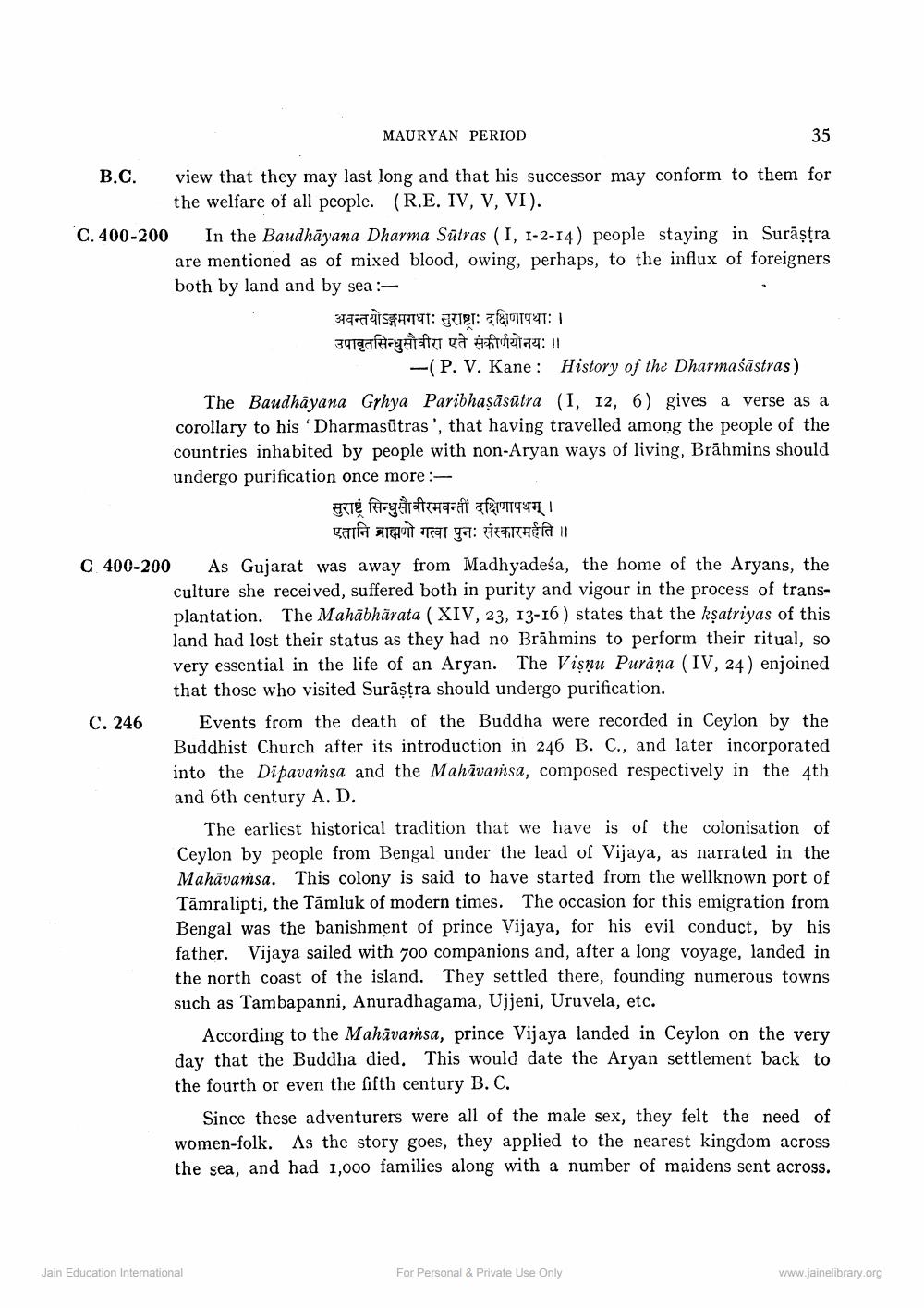________________
MAURYAN PERIOD
35
B.C. view that they may last long and that his successor may conform to them for
the welfare of all people. (R.E. IV, V, VI). C. 400-200 In the Baudhāyana Dharma Sūtras (I, 1-2-14) people staying in Surāşțra
are mentioned as of mixed blood, owing, perhaps, to the influx of foreigners both by land and by sea :
अवन्तयोऽङ्गमगधाः सुराष्ट्रा: दक्षिणापथाः । उपावृतसिन्धुसौवीरा एते संकीर्णयोनयः ।।
-(P. V. Kane: History of the Dharmaśāstras) The Baudhāyana Grhya Paribhasāsūtra (I, 12, 6) gives a verse as a corollary to his 'Dharmasūtras', that having travelled among the people of the countries inhabited by people with non-Aryan ways of living, Brāhmins should undergo purification once more :
सुराष्ट्र सिन्धुसौवीरमवन्ती दक्षिणापथम् ।
एतानि ब्राह्मणो गत्वा पुनः संस्कारमर्हति ॥ C 400-200 As Gujarat was away from Madhyadeśa, the home of the Aryans, the
culture she received, suffered both in purity and vigour in the process of transplantation. The Mahābhārata ( XIV, 23, 13-16) states that the ksatriyas of this land had lost their status as they had no Brāhmins to perform their ritual, so very essential in the life of an Aryan. The Visnu Purana (IV, 24) enjoined
that those who visited Surāṣtra should undergo purification. C. 246 Events from the death of the Buddha were recorded in Ceylon by the
Buddhist Church after its introduction in 246 B. C., and later incorporated into the Dipavamsa and the Mahavamsa, composed respectively in the 4th and 6th century A. D.
The earliest historical tradition that we have is of the colonisation of Ceylon by people from Bengal under the lead of Vijaya, as narrated in the Mahāvamsa. This colony is said to have started from the wellknown port of Tāmralipti, the Tāmluk of modern times. The occasion for this emigration from Bengal was the banishment of prince Vijaya, for his evil conduct, by his father. Vijaya sailed with 700 companions and, after a long voyage, landed in the north coast of the island. They settled there, founding numerous towns such as Tambapanni, Anuradhagama, Ujjeni, Uruvela, etc.
According to the Mahāvamsa, prince Vijaya landed in Ceylon on the very day that the Buddha died. This would date the Aryan settlement back to the fourth or even the fifth century B.C.
Since these adventurers were all of the male sex, they felt the need of women-folk. As the story goes, they applied to the nearest kingdom across the sea, and had 1,000 families along with a number of maidens sent across.
Jain Education Interational
For Personal & Private Use Only
www.jainelibrary.org




